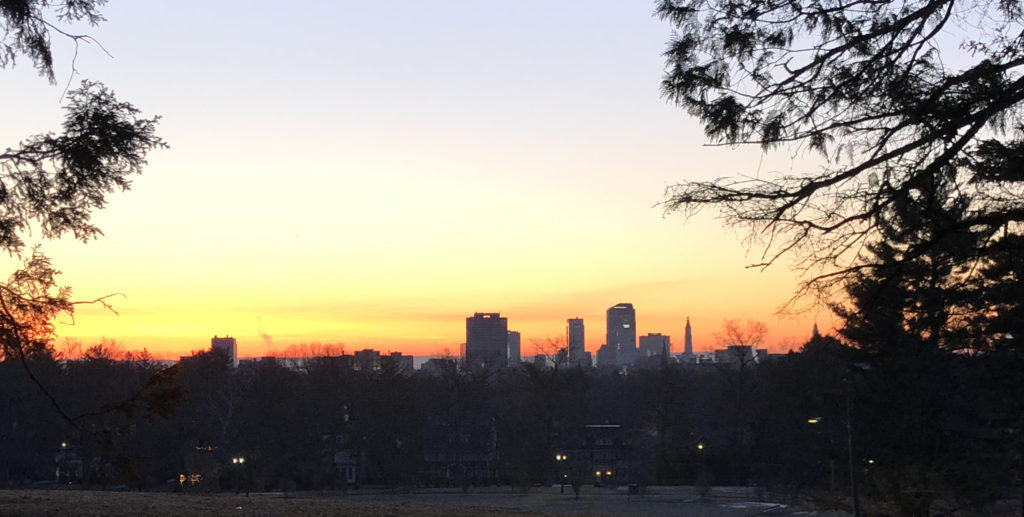By Elizabeth J. Normen
(c) Connecticut Explored Inc. Summer 2021
Subscribe/Buy the Issue!
This issue’s stories are about the cities, towns, and neighborhoods where we live and the way in which human intervention shapes the built environment and our experience of it. Two stories from New Haven show that human intervention can take very different forms: Ed Logue was a community builder who remade the city through urban renewal in the 1950s (see story, page 26). A decade earlier, Reverend Richard A. G. Foster was a community builder, too, but he sought to remake the city through uplifting his congregation and the larger community through his service as an alderman (see story, page 42).
Sometimes we fall in love with the place we live, as other stories illustrate. How does that emotional connection happen? Once again, the built environment and the people and community all come into play. Photographer and Trinity College professor Pablo Delano’s photo essay, “Visually Breathtaking Hartford Explored” on page 14, is a perfect example: his love for the capital city comes from an appreciation both for urban streetscapes and for the community he sees reflected there.
Our story about legendary jurist and civil rights activist Constance Baker Motley and her retreat in Chester is another great example. For 40 years Motley found respite and renewal from her highly charged career in New York with family and new-found friends in that small town on the Connecticut River. But she also developed a deep connection to the 1745 colonial she and her family owned there. The Constance Baker Motley Preserve is one of the newest sites on the Connecticut Freedom Trail (see story, page 50).
My husband’s and my first house was a charming 1940s Cape Cod on a full acre in the town where I grew up. Eventually the challenges of the commute drove us closer to the city. Our second house, where we raised our kids, was a 1920s Colonial Revival on a tiny quarter acre in the first-ring suburb next door. We loved how often we could ditch the car: our kids’ elementary school, their friends, and shops and restaurants were all within walking distance. Somehow the empty nest then called us to our current home, an open-plan 1970s high-rise condo on the edge of a city park in the same town. Different places for different stages for us, it seems, though we haven’t gone far. I’m reminded by “Seeking Racial Equity in Norwalk’s Village Creek” (page 44) though, that I’ve never had to worry about whether I belonged in my new neighborhood or might be steered away from purchasing the home I set my heart on.
We hope you’ll explore your connection to Connecticut this summer, and we ALL hope that we’ll be enjoying a reopening of museums and historical sites. We’ve been so impressed and amazed by our partners’ resilience and creativity this past year in maintaining a connection to all of us who love Connecticut history. But they’re anxious to see you in person! In Spotlight, you’ll find lots of information in this—and every issue—about what to go see and do this summer.
As always, be well, and thank you for continuing to explore Connecticut history with us!
GO TO NEXT STORY
Go back to Summer 2021
Read more from the publisher’s Blog

